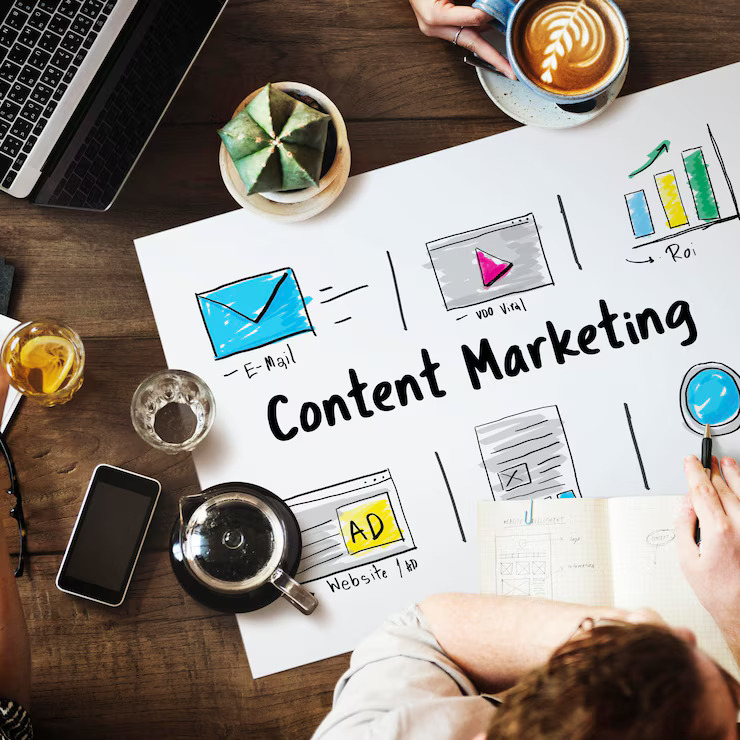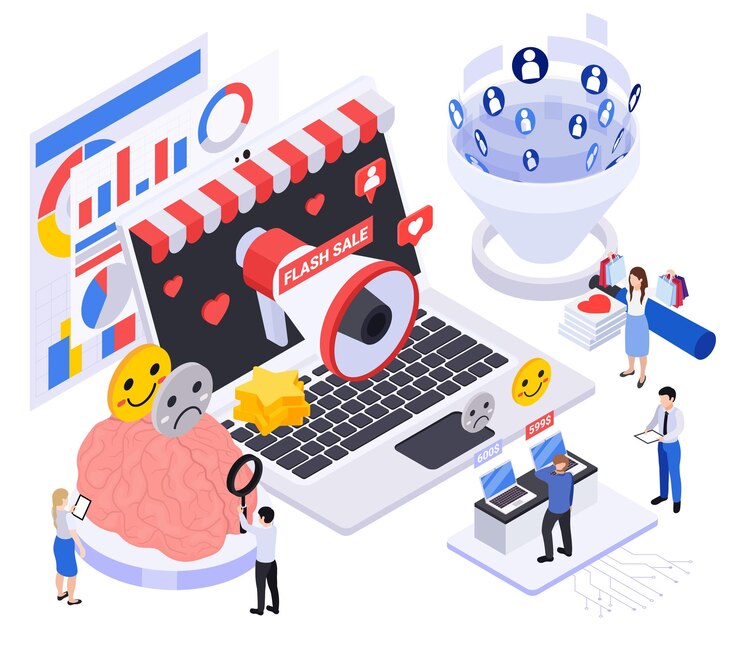As businesses evolve in the digital age, so do their marketing strategies. Content marketing and traditional marketing both aim to reach and engage audiences, but they differ significantly in approach, purpose, and tactics. Understanding these differences can help companies allocate resources effectively, meet audience expectations, and achieve optimal results. Understanding the key differences between Content Marketing vs. Traditional Marketing is essential for developing a comprehensive and effective marketing strategy.
Let’s explore the key distinctions, benefits, and when to use content marketing vs. traditional marketing.
1. What is Content Marketing?
Content marketing focuses on creating and distributing valuable, relevant, and consistent content to attract and retain a target audience. The objective is to establish trust, build relationships, and drive profitable customer actions over time. Content marketing nurtures the customer journey by providing value rather than promoting a product or service outright.

Common forms of content marketing include:
- Blog posts and articles
- Infographics and visual content
- Ebooks and whitepapers
- Social media content
- Podcasts and videos
- Case studies and testimonials
- Newsletters and email marketing
Goal: Content marketing aims to educate, inform, or entertain audiences, ultimately creating loyal customers and brand advocates.
2. What is Traditional Marketing?
Traditional marketing, on the other hand, is often referred to as “outbound” or “interruptive” marketing. It’s the conventional approach to advertising that promotes products or services directly to a broad audience. Traditional marketing typically has a one-way communication structure and emphasizes immediate sales rather than relationship-building.

Common forms of traditional marketing include:
- TV and radio commercials
- Print ads (newspapers, magazines)
- Billboards and outdoor advertising
- Direct mail (catalogs, brochures)
- Telemarketing and cold calling
Goal: Traditional marketing aims to reach as many people as possible with a product-focused message to increase awareness and prompt an immediate purchase decision.
3. Key Differences Between Content Marketing and Traditional Marketing
| Aspect | Content Marketing | Traditional Marketing |
|---|---|---|
| Focus | Long-term relationship-building and providing value | Short-term, direct promotion to prompt immediate action |
| Approach | Inbound, attracts customers through value-driven content | Outbound, interrupts the audience with ads and promotional messages |
| Communication Style | Two-way, encourages engagement and feedback | One-way, information flows from the brand to the consumer |
| Audience Targeting | Specific, targeted to specific buyer personas | Broad, reaching a large, general audience |
| Content-Type | Blogs, social media posts, videos, newsletters, etc. | TV/radio ads, print ads, billboards, direct mail |
| Metrics and ROI | Measured through engagement metrics (views, shares, leads) and long-term relationship indicators | Measured through immediate metrics (reach, frequency, response rates) |
| Lifespan of Content | Long-lasting, especially evergreen content | A Short-lived, ad campaign ends after the budget or period expires |
| Cost Structure | Generally cost-effective, with a focus on content creation and strategy | Often high costs for media space and production (TV, print, billboards) |
| Consumer Perception | Builds trust by providing helpful information | Can be perceived as intrusive or interruptive |
4. Benefits of Content Marketing
Content marketing is designed to support the entire customer journey by delivering value at each stage, from awareness to purchase. Here are some specific benefits of content marketing:
- Builds Brand Authority: By providing valuable information, companies position themselves as industry experts, gaining credibility and trust.
- Supports SEO: Blogs, videos, and other content help improve search engine rankings, making it easier for customers to find your brand organically.
- Engages Targeted Audiences: Content marketing allows brands to engage directly with niche audiences, meeting their specific needs and pain points.
- Cost-Effective: Although creating high-quality content requires time and resources, it is typically less costly than many traditional marketing methods.
- Fosters Customer Loyalty: Regularly engaging audiences with valuable content helps create loyal brand advocates and repeat customers.
Example: A tech company may use content marketing by publishing blog posts on industry trends, product use cases, or technology news to educate potential clients while subtly showcasing their expertise.
5. Benefits of Traditional Marketing
Traditional marketing, while often more costly, has certain advantages, especially for brand awareness and broad reach:
- Broad Audience Reach: Traditional marketing can reach massive audiences quickly through channels like TV, radio, and print media.
- High Brand Visibility: Television commercials, billboards, and magazine ads give brands high visibility, often resulting in strong brand recall.
- Effective for Immediate Impact: Traditional marketing is often used for time-sensitive promotions, such as product launches, special sales, or events.
- Tangible Impact: Printed materials like brochures and catalogs provide a physical touchpoint with potential customers, which can be impactful in certain industries.
Example: A large automotive company may invest in traditional marketing through TV commercials to create buzz around a new car model, targeting a broad demographic with a strong call to action.
6. Choosing Between Content Marketing and Traditional Marketing
Choosing the right approach depends on your business goals, budget, target audience, and industry. Here’s a guide to help you decide:
- When to Use Content Marketing:
- To nurture long-term relationships with customers
- To attract and convert niche audiences
- To educate and inform customers about complex products or services
- When operating on a limited budget and seeking sustainable methods
- When aiming to enhance SEO and drive organic traffic
- When to Use Traditional Marketing:
- To quickly build brand awareness for a mass-market product or service
- To create an immediate, time-sensitive impact (e.g., product launches, seasonal sales)
- When aiming for high visibility through proven channels (e.g., TV, billboards)
- When targeting a broad demographic without specific segmentation
- If resources are available for high-cost media buys and production
7. Combining Content Marketing and Traditional Marketing
A hybrid approach that incorporates both content marketing and traditional marketing can be highly effective. For example, a brand might:
- Use Traditional Marketing to Build Awareness: Launch a TV campaign to generate excitement about a new product.
- Leverage Content Marketing for Education: Create blog posts, videos, and guides that provide more in-depth information about the product for audiences looking to learn more.
- Integrate Messaging Across Platforms: Maintain consistent branding and messaging between traditional ads and digital content to reinforce brand recognition.
- Use Analytics to Optimize Campaigns: Track content engagement and conversions, adjusting strategies across both traditional and digital platforms for better results.
This approach ensures that your brand can maximize reach while engaging interested audiences at different touchpoints along their journey.
8. Measuring Success in Content Marketing vs. Traditional Marketing
Understanding performance metrics is crucial for both approaches, but they differ in what they measure and the insights provided.
- Content Marketing Metrics:
- Engagement: Likes, shares, comments, and time spent on page
- Conversion Rates: Number of readers who take action (e.g., download, subscribe)
- SEO Performance: Search ranking, organic traffic, and keyword relevance
- Customer Journey Impact: Measuring how content contributes to moving leads through the sales funnel
- Traditional Marketing Metrics:
- Reach and Frequency: The number of people exposed to an ad and the number of times they see it
- Brand Recall: How well an audience remembers the ad and associates it with the brand
- Response Rates: Number of viewers or listeners who act on the ad (e.g., call, visit a store)
- Sales Impact: Immediate impact on sales or inquiries within the campaign period
Conclusion
Content marketing and traditional marketing each bring unique strengths to the table. Content marketing is ideal for building long-term relationships, providing value, and cultivating brand loyalty, especially in a digital-first world where audiences expect information and engagement. Traditional marketing, with its broad reach and high visibility, is effective for building awareness quickly and making an immediate impact.
For many businesses, a combination of content and traditional marketing is the most powerful approach, leveraging the reach of traditional marketing with the engagement and trust-building power of content marketing. By balancing these strategies and aligning them with your business goals, you can create a comprehensive marketing plan that effectively resonates with your audience and drives measurable results.
Read Also
- How Small Businesses Can Benefit from Blogging
- How to write an effective newsletter
- How to Create Lead Magnets to Grow Your Audience
- 8 Best Email Marketing Platforms for Bloggers
- B2B Blogging: A Powerful Tool for Business Growth
- 10 Best Corporate Blogging Strategies
Frequently Asked Questions (FAQs)
A. Content marketing involves creating and sharing valuable, relevant, and consistent content to attract and engage a target audience. The goal is to build trust and drive profitable customer actions, often using blogs, videos, infographics, and social media.
A. Traditional marketing refers to conventional advertising methods such as TV, radio, print ads, billboards, and direct mail. It focuses on directly promoting products or services to a broad audience.
A. Builds trust and authority over time.
Engages a targeted audience effectively.
Improves SEO rankings and organic traffic.
Generates leads at a lower cost.
Offers long-term value with evergreen content.
A. Content marketing is generally more cost-effective in the long term. It focuses on creating reusable and evergreen content that drives consistent traffic, whereas traditional marketing often requires recurring investments for ad placements.
A. Yes, combining both approaches can amplify your marketing efforts. For example, a traditional TV ad can direct viewers to a website filled with valuable content, creating a seamless journey from awareness to engagement.
A. Content Marketing: Focuses on specific niches and personas, using data to address their needs.
Traditional Marketing: Targets broad demographics, often based on location, age, or gender.
A. Content Marketing: Leverages digital tools like SEO, analytics, email marketing, and social media platforms.
Traditional Marketing: Relies on legacy technologies like printing presses, TV/radio broadcasting, and physical distribution networks.






